Cool Jobs: Crime scene investigators
These researchers don’t miss a clue
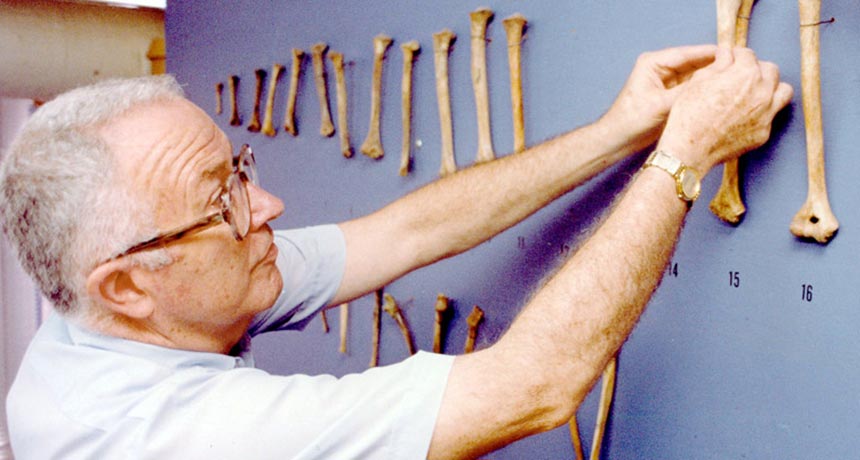
The dead do tell tales — if experts care to listen. Forensic anthropologist William Bass arranges a display of how a person’s bones change year by year as we age. This information can help identify a crime victim when little else is known.
University of Tennessee, Knoxville
By Sid Perkins
TV shows such as CSI: Crime Scene Investigation and Bones make forensics look exciting — and in many cases, using science and technology to investigate crime is exciting.
Some crime scenes come loaded with clues: fingerprints, bullet holes, blood spots and even a body or two. Others have almost none: Maybe just a small swatch of an escapee’s clothing snagged on a fence, or a tiny scrape where a burglar jimmied a window. In still other cases, the clues can be so minuscule that they require a microscope to reveal.
If anything, television shows make solving crimes seem easier, more glamorous and certainly quicker than in reality. “Those shows are mostly just for entertainment,” says Kendall Stoner, an analyst at the Tennessee Bureau of Investigation’s crime laboratory in Nashville. “We only have basic computers, and our lab doesn’t look like a movie set,” she says. “But we get the job done.”
Here we profile Stoner and two other real forensic experts. Each job requires very individual skills, yet all three work in teams to decipher crime scenes, identify evidence and help bring criminals to justice. Oh, and these specialist crime fighters also help ensure no innocent people are punished for crimes they didn’t commit.
“It’s all about making sure that the correct person is prosecuted,” says Reanna Day, an agent with the Federal Bureau of Investigation in Knoxville, Tenn.
On the scene
Arson, bank robbery, kidnapping and murder are just a few of the many serious crimes forensic experts will investigate. These crimes can happen just about anywhere, from the tallest office building to the deepest forest. Solving such a diverse set of offenses across a range of scenes is challenging. But there’s good news: “Anything can be a piece of evidence,” Day points out.
Day leads one of the response teams that the FBI trains to probe for clues at crime scenes. While Day studied Japanese and math in college, the FBI Academy in Quantico, Va., taught her the science of collecting evidence, including hair and carpet fibers. “These are things that can disappear or be tracked from one part of the crime scene to another if you’re not careful,” she notes. She also learned how to collect and preserve fingerprints, as well as samples of blood.
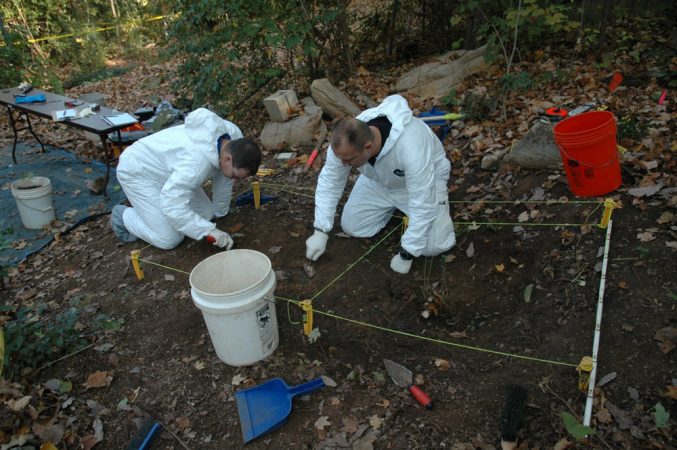
Photographs are an important part of Day’s job, since they document exactly how a crime scene looked before her investigating scours the site for evidence. Later, this scene-setting information helps analysts interpret that evidence, which law-enforcement agents also use to identify suspects. Eventually, attorneys rely on that same evidence to help show a suspect’s guilt or innocence.
Examining a crime scene can take 12 or more hours. It might involve poring over a single room for a handful of clues — or a broad patch of forest laden with thousands of potential clues. Day and her team sometimes work quickly. “If it’s raining or snowing, we have to rush to protect evidence before it gets erased,” she notes. Other times, at the scenes of crimes that occurred outdoors long ago, the team works at a careful pace familiar to any archaeologist.
Day and her response team are real evidence sleuths. They find and collect physical clues. They then leave the analysis to experts with other types of specialized training.
Meanwhile, back at the lab
The job of the crime analyst is to study evidence collected at a crime scene. Often, that means comparing evidence to information contained in huge databases. Those databases contain everything from the treads of thousands of different sneakers, boots and other footwear to millions of fingerprints. Making a match can help identify clues and nab criminals.
In recent years, DNA analysis has become one of the greatest forensic tools for identifying crime suspects. For Kendall Stoner, it is every bit as important as the magnifying glass was a century ago.
About 99.8 percent of human DNA is identical among all people. However, the remaining 0.2 percent contains enough differences to give each person a unique genetic signature. (Except in identical twins, and even then there are individual differences in the chemicals attached to their genes.)
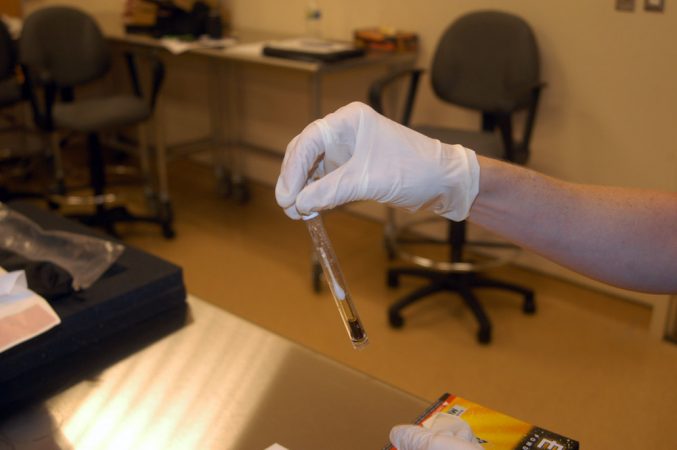
Many detectives call a DNA profile a “genetic fingerprint.” That is because just like an actual fingerprint, a suspect’s unique DNA also can provide a link to a crime scene.
DNA analysis is like the puzzles (and crime novels) that Stoner loved as a teen. “Anything where I was working toward an answer,” Stoner says. “I loved the challenge.”
Even before Stoner went to college she wanted to work in law enforcement. At the University of Alabama in Tuscaloosa, she also became interested in genetics and earned a degree in biology. Later, she received a graduate degree in forensic science, this time from the University of Alabama in Birmingham. Today, Kendall is one of 10 DNA analysts at the Tennessee Bureau of Investigation’s crime lab in Nashville.
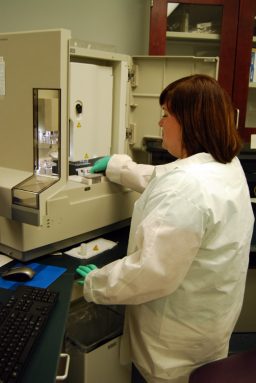
For each analysis, Stoner starts by collecting DNA from evidence collected at a crime scene. She might swab a bloodstained piece of clothing or snip a piece of skin collected from under a victim’s fingernails — skin that may have been scratched from a suspect while fending off an attack.
Stoner then drops the swab, and any cells it has picked up, into a test tube holding a chemical solution. That solution extracts the DNA from the cells. Next, she adds dyes that reveal whether there’s enough DNA present to produce a genetic profile. If there is, she uses a process called polymerase (Puh-LIM-er-ace) chain reaction, or PCR, to copy the DNA over and over. PCR can take just one-billionth of a gram of a person’s genetic material and create thousands or millions of copies of that DNA. Finally, Stoner places this amplified — or copied — genetic material into a machine that converts genes in the DNA into a series of numbers. These numbers can be compared to other DNA profiles.
Stoner often mixes her own chemical solutions: The fresher they are, the better the results, she notes. While Stoner falls back on the science she learned in school, she also constantly learns new skills. That is because the science of DNA profiling is evolving so quickly, there are always new tricks of the trade to learn. The tradeoff? New developments in chemistry and technology now let Stoner produce genetic fingerprints from smaller amounts of genetic material than ever.
Even in the fictional world of television, Stoner notes characters often are shown using real forensic techniques. Still, these crime shows can give viewers some wrong ideas. For instance, Stoner says, “one cell doesn’t provide a full DNA profile. Also, you can’t collect DNA off of just anything.”
Last year, Stoner and her fellow DNA analysts in Nashville performed about 10,000 DNA tests on almost 5,700 pieces of evidence. “You’re always learning something, and every case is different,” Stoner says. “If you want to sit behind a desk and do the same thing day after day, this is not the job for you.”
E-I, E-I … oh!
While investigators discover some murder scenes very quickly, they may not find others for weeks, months or even years. By then, all that’s left of a victim might be a bare skeleton. Determining a victim’s identity, much less how and when he or she died, poses a challenge.
In such cases, investigators often turn to forensic anthropologists like William Bass, of the University of Tennessee in Knoxville. Bass and other experts often can identify victims even after they have been burned, mutilated or left to rot. For example, the length of the leg’s femur can reveal how tall a victim was. The shape of the pelvis can indicate a victim’s gender. Even the skull can provide clues about a victim’s gender and race.
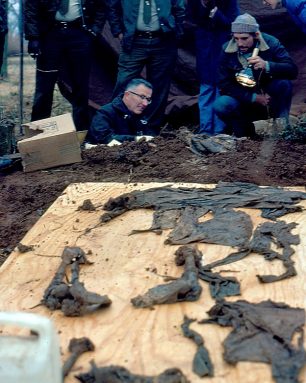
In many cases, Bass says, the best clue to identifying a victim can come from pinning down when the person died. Even a range of dates can let investigators, relying on reports of missing persons, narrow the list of possible victims. It also can help support or refute the alibis of murder suspects.
Before the 1970s, estimating a victim’s date of death was more guesswork than science. “No one had really scientifically studied how bodies decompose,” observes Bass. So no one knew the answers to some simple — but grim — questions, such as: When do the teeth begin to fall out of the skull? At what point do the arms detach? What causes the greasy black stain beneath decomposing bodies (and how long does that last)?
In 1980, in an attempt to find some answers, Bass and another colleague at the University of Tennessee founded what’s now called the Forensic Anthropology Center. Today it is better known by its nickname: the Body Farm.
Corpses that end up at this 1-acre plot of land, alongside a river near the university’s downtown campus, aren’t crime victims. Instead, the bodies — what physicians refer to as cadavers — have been donated to science.
Each cadaver is a separate science experiment. The Body Farm’s cadavers include males and females of all ages. Researchers leave some cadavers lying in the sunshine on open ground; others they place in the shade beneath trees. Some are clothed, others naked. Leaves and branches cover some bodies. Others are buried in shallow graves — or even under a concrete slab. Some bodies are left to decompose in small sheds or buildings, while others are left in the trunks of cars. “There are thousands of possible variations, and we’re studying only a few,” Bass says.
Each variation reproduces a certain type of crime scene. By studying all aspects of body decomposition, over long periods, the researchers have compiled a wealth of data that law enforcement analysts can use.
Not surprisingly, bodies quickly decompose in summer, Bass says. “They can go from fresh body to a complete skeleton in only two weeks,” he notes. Maggots, or the larvae of blowflies, play a big role. These insects (Bass calls them “nature’s little helpers”) can swarm a body by the hundreds within minutes. “They’re the first insects to attack a body,” Bass observes.
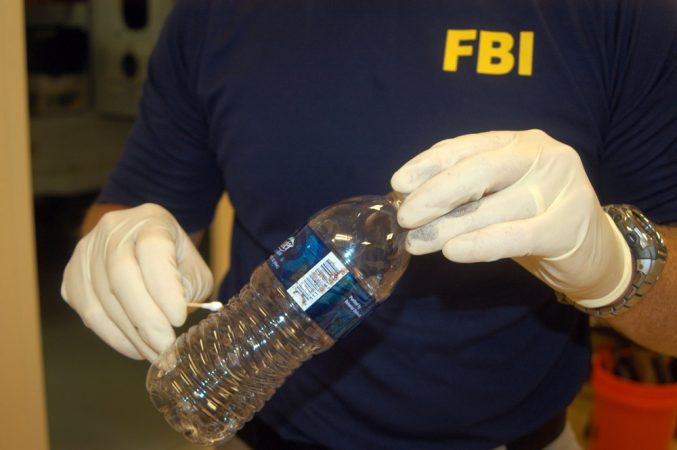
But blowflies aren’t active at temperatures below 52°F (11.1°C). So during cold weather, decomposition slows dramatically. “You can leave a body out in November, and it can still be in pretty good shape until April or so,” the researcher says.
As gruesome as the work is, it’s still science. Bass and his colleagues use biology, anatomy, chemistry, entomology (the study of insects) and anthropology (the study of humans and their culture) to unravel each case.
“This is an interesting field, if you like puzzles,” says Bass, who is now retired but still collaborates on research projects.
Whatever the particular job, the challenges of finding answers makes forensics an interesting career for the curious. There is also the reward of helping fight crime — something Day, Stoner and Bass all say motivates them too.
Power Words
forensics The use of science and technology in investigating crimes.
anthropology The study of humans, their culture and sometimes the evolution of their physical traits.
arson The crime of intentionally setting a fire with the intent to cause damage.
cadaver A human corpse.
database An organized collection of information.
decomposition The process by which organic materials, including animal remains, break down over time.
DNA (Deoxyribonucleic acid) A molecule found in nearly all cells of all living organisms. This genetic material contains the instructions needed for the organism to develop, function and reproduce.
DNA fingerprint The unique set of genetic markers that identify an individual.
polymerase chain reaction (PCR) A biochemical process that repeatedly copies a particular sequence of DNA.
maggot The larva of a fly.
This is one in a series on careers in science, technology, engineering and mathematics made possible by support from the Northrop Grumman Foundation







